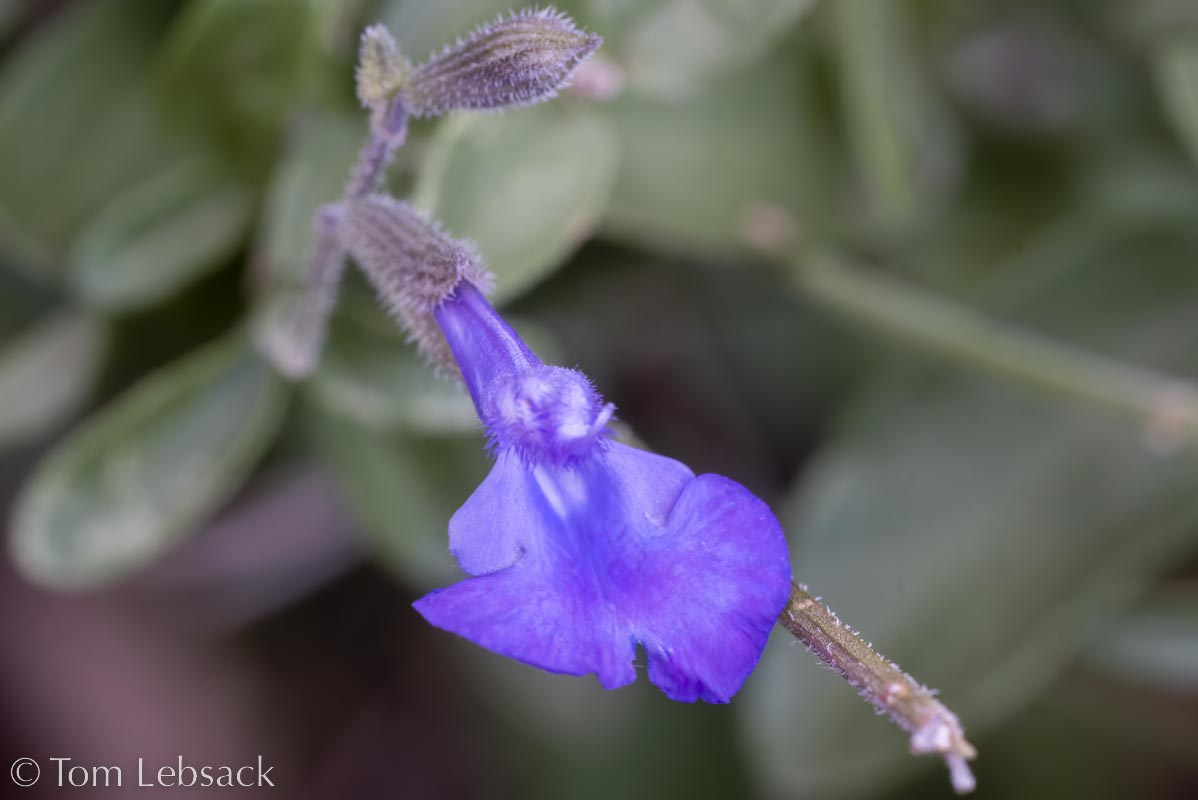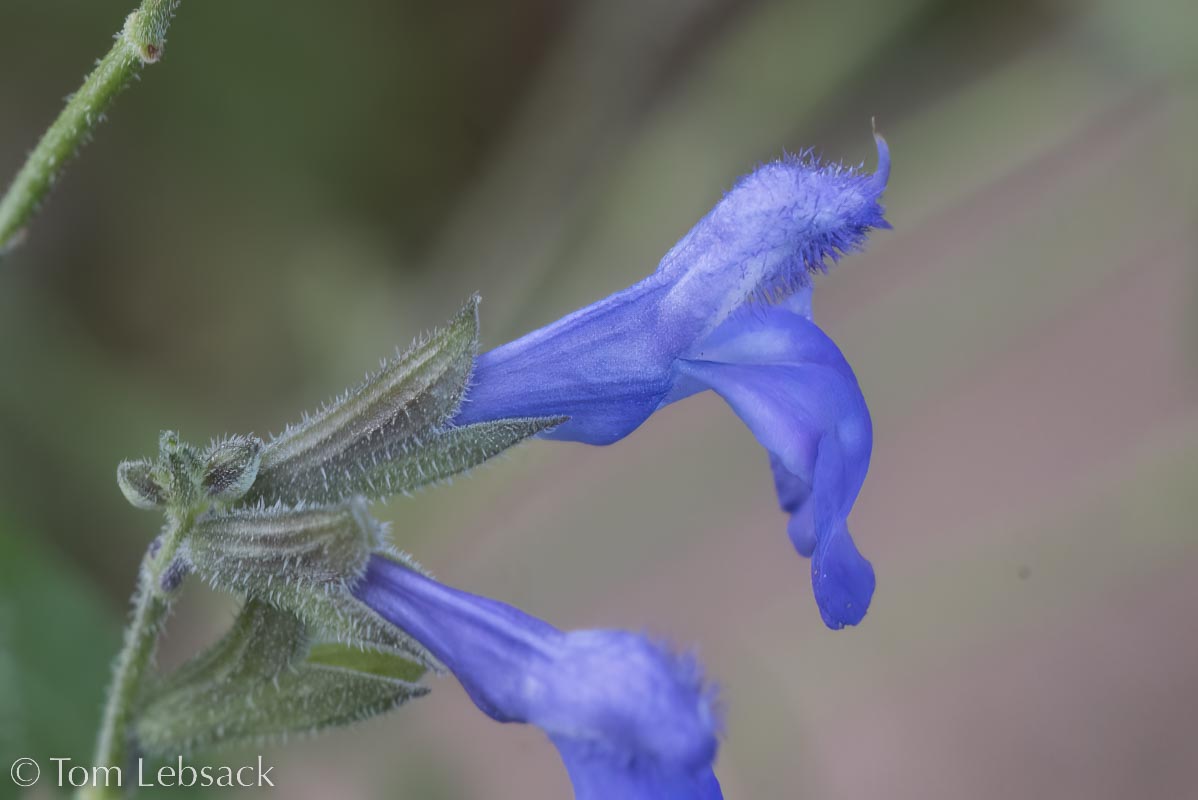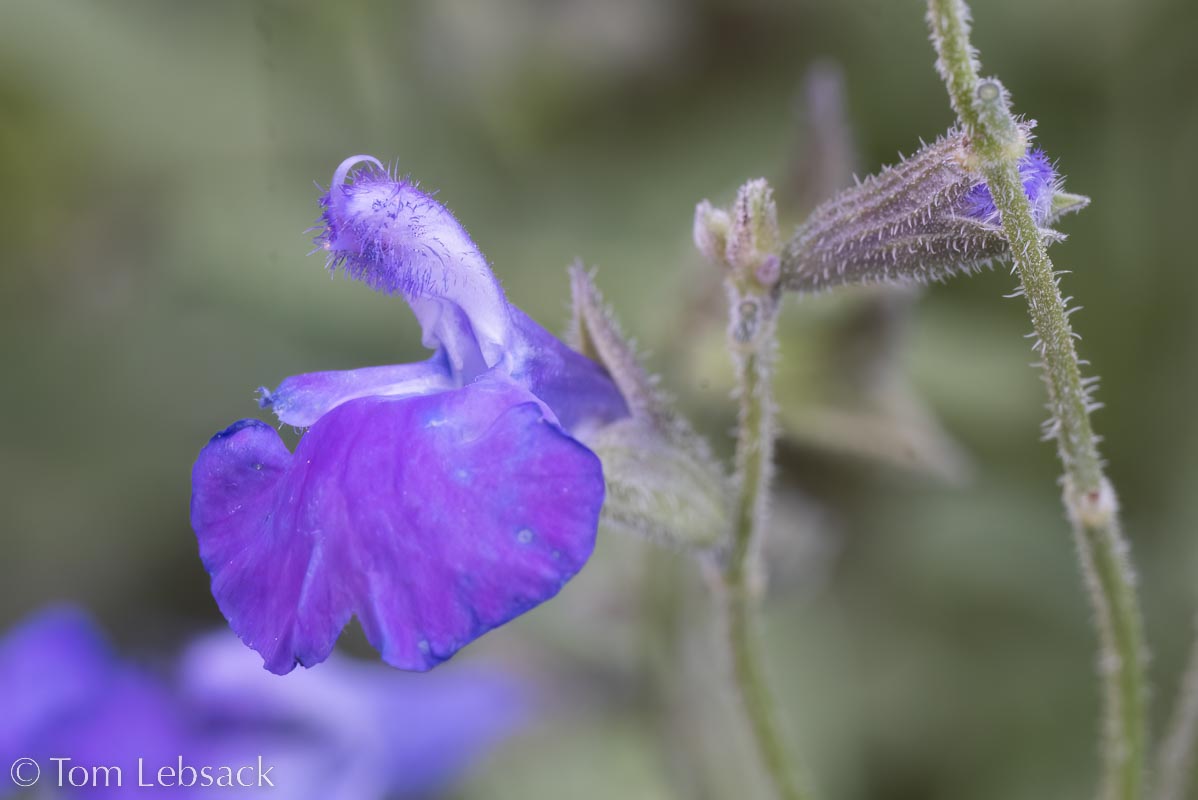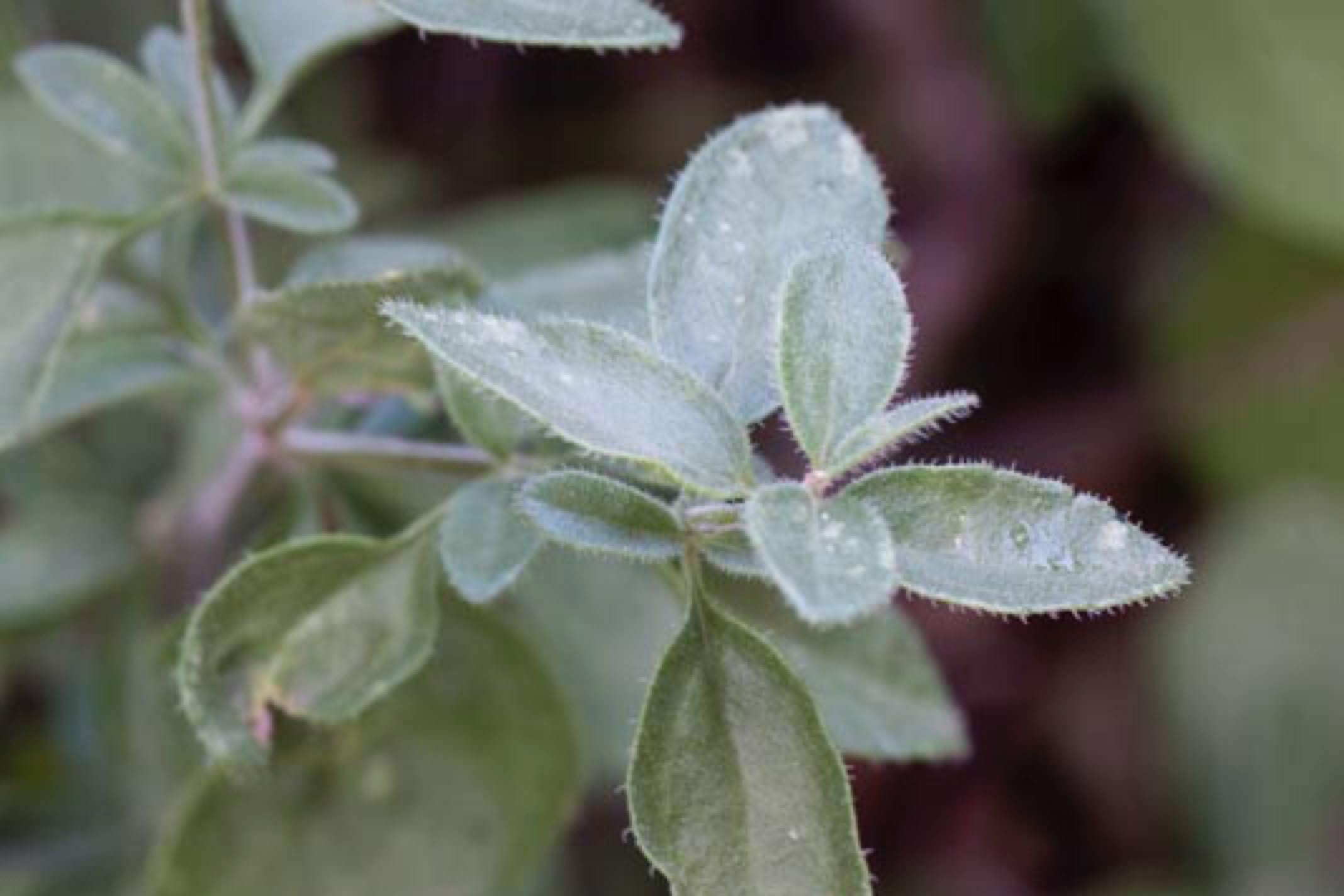Texas Wildbuds
Salvia lycioides
(Canyon Sage)
| Scientific Name | Salvia lycioides | USDA PLANTS Symbol | SALY |
| Common Name | Canyon Sage | ITIS Taxonomic Serial No. | 32723 |
| Family | Lamiaceae (Mint) | SEINet Reference |
Click Here |
| Description |
Habitat: Rocky soils in canyons, ledges and slopes in mid to upper elevations in mountainous areas of Big Bend. Plant: Perennial shrub with many erect and spreading stems, 1 to 2 feet tall and as wide; stems are mostly smooth and may be slightly hairy and glandular near tips. Leaves: Oblong-elliptic to broadly ovate leaves 3/8 to 1-1/4 inches long; prominent mid-vein ; on short petioles; edges are entire to coarsely crenulate-serrulate; surfaces may be smooth to covered with minute hairs and gland-dotted. Inflorescence: Elongated open racemes up to 6 inches long with flowers oppositely-arranged and about 1/2-inch long; blue to indigo-blue corollas have two lips, lower lip much larger than the upper. Bloom Period: April to October. Reference: "Manual of the Vascular Plants of Texas" by Correll and Johnston and "Wildflowers of Texas" by Michael Eason. |
BONAP Distribution Map Map Color Key Map Color Key |
Texas Status: Native |
Banner photo of Castilleja indivisa and Lupinus ssp. taken along FM 1323 north of Johnson City, Blanco County
© Tom Lebsack 2025
Every attempt is made to provide accurate, up-to-date, and relevant information, but the completeness or accuracy of any information presented on this website cannot be guaranteed. I use authoritative references to insure high standards of accuracy and review and update the information frequently.



